Still from Bangkok, Thailand, this time I am writing about this Nirai Kanai restaurant specializing in Okinawan cuisine! Although Okinawa is a part of Japan, its popularity might not be as high as other destinations like Tokyo, Osaka, Kyoto, etc. Okinawa is actually an island located southernmost of Japan, considered tropical island, this place is stunningly beautiful all year long. The best part is that Okinawan people are known for their longevity, thanks to the healthy and nutritious Okinawan cuisine combined with good lifestyle.
Nirai Kanai restaurant is actually originated from Tokyo, Japan, bringing the concept of authentic Okinawan theme as well as the cuisine. Nirai Kanai itself means “Land of God” or “A Place Where Gods Live”, as believed by Ryukyuan people, the original people of Okinawa.
In Bangkok, there are 2 outlets of Nirai Kanai already, one in Nihon Machi Mall in Sukhumvit 26, and this one that we are going to review, in Thong Lor 11. This outlet is much more bigger than the other one, since it occupies a whole house-alike area, with spacious indoor and outdoor seating area. Decorated with a touch of rustic and vintage Okinawan village theme, guaranteed you’ll feel like you are in typical stalls in Okinawa once you step in!
With so many seating areas, it’s very nice to explore the place first before you decide where to sit. We preferred to sit in the outdoor seating area because it looks very Okinawan and we simply couldn’t stop admiring all the colorful details!
Nirai Kanai apparently serves LARGE selection of Awamori, Okinawan alcoholic beverages. Awamori usually have high alcohol level (around 30-45%), and are said to be (one of) the secrets of Okinawan people’s longevity. Do you dare enough to try? ;-D
The indoor seating area is more cramped but very familial just like in typical food stalls in Okinawa. The wall murals and every little decorations fit perfectly well with the Okinawan theme, LOVE! <333
Nirai Kanai’s menu is nothing but impressive. The selections of food from snacks (or tsumami, best enjoyed with alcoholic beverages) to Okinawan dishes like Goya, Rafute, etc are just overwhelmingly impressive. To cut it short, this is like your one-stop Okinawan restaurant where you can find EVERYTHING you commonly find in the island itself.
Shikuwasa Juice THB 80
When I saw this on the menu, I was ecstatic because this is not something I can find everyday in my life. Shikuwasa is Okinawan orange, sometimes also addressed as Taiwan Tangerine. Green, small fruits with sour taste and very strong fragrance. What I love about this fruit is the fragrance, a strong citrus fragrance which is a mix of orange, lemon, and lime in one go. Better yet, the shikuwasa here are imported directly from Okinawa, there you go!
Aburi Shime Saba THB 280
MUST ORDER dish when you are here, this vinegar-ed mackerel are served on bamboo, and torch-grilled in front of you on the table. This dish is fascinating seen from any ways: the presentation and action are just too good to be missed.
We actually have visited this restaurant twice during these 2 months, and the result of this mackerel will be up to your waitress, really. The first time we came here, our waitress was an experienced woman who torch-grilled our mackerel longer, resulting in darker-colored yet super crispy skin with perfect taste. The second time we came here, another waitress did the grilling for only a short time, the skin didn’t become crispy and the taste was very salty and sour, probably because the salt and vinegar weren’t properly evaporated.
I think even people who don’t like mackerel can actually eat this dish, no fishy smell at all and very fresh!
Suchika THB 100
Okinawan-style salted and pickled grilled pork perfect as side dish to accompany drinking alcoholic beverages. The grilled pork are thinly sliced, and definitely very fatty. Served with green vegetables, this dish is refreshing, salty, and addictive.
Mimiga THB 95
Pork ears with garlic sauce, good-tasted snack and popular option as well since it contains lots of collagen. I personally REALLY like pork ears because of the texture, very crunchy and fun to eat. Unlike typical pork ears cooked with Chinese style (sweet), this one has a balanced sourness infused.
Tofuyo THB 165
Okinawan cuisine use lots of tofu as ingredients and Tofuyo is one of signature dishes from the island. Tofuyo is tofu fermented in a mixture of awamori, rice malt, and red yeast for a long period of time. Because of its distinctive intense flavor, Tofuyo is often referred as “Okinawan Cheese”, and usually served in small cubes. It should be enjoyed just a tiny bit at a time (by toothpick or such utensils) and best combined with alcoholic beverages as well.
Personally I don’t really like tofuyo because of its overly-strong smell and taste, but if you order some awamori or other alcoholic beverages, I guarantee that this will taste so much better paired with them!
Okinawan Salad THB 250
This platter of Okinawan Salad basically covers everything you wanna try in little yet satisfying portions. First, of course they have the infamous Goya Chanpuru (stir-fried bitter gourd and egg), Umibudou (Okinawan seaweed), Sunui Usachi (thin seaweed with vinegar), Aloe Sashimi, and Horenzo.
Goya Chanpuru is very, very famous in Okinawa, and if you happen to visit there, you will find many food and drinks made using goya. Goya is actually bitter gourd, and as the name suggests, it *is* bitter. I have never really liked goya but still find it edible somehow. Here the goya isn’t too bitter because they are served cold, and I think it’s very enjoyable too compared to the ones in Okinawa. Goya Chanpuru itself is a stir-fry of goya with egg, and the thinly-sliced goya are very crunchy and fun to eat. I recommend this to anyone who wants to experience the authentic taste of Okinawan food!
Umibudou, literally translated as “sea grapes” is soft and succulent seaweed from Okinawa, also known as green caviar. As some other ingredients in Nirai Kanai, the umibudou is imported directly from Okinawa to ensure the freshness and authenticity. Amazing! ;-0 Although the taste itself is kinda bland, but the beautiful “grapes” are so crunchy it’s difficult to stop munching when you start eating. MUST TRY!
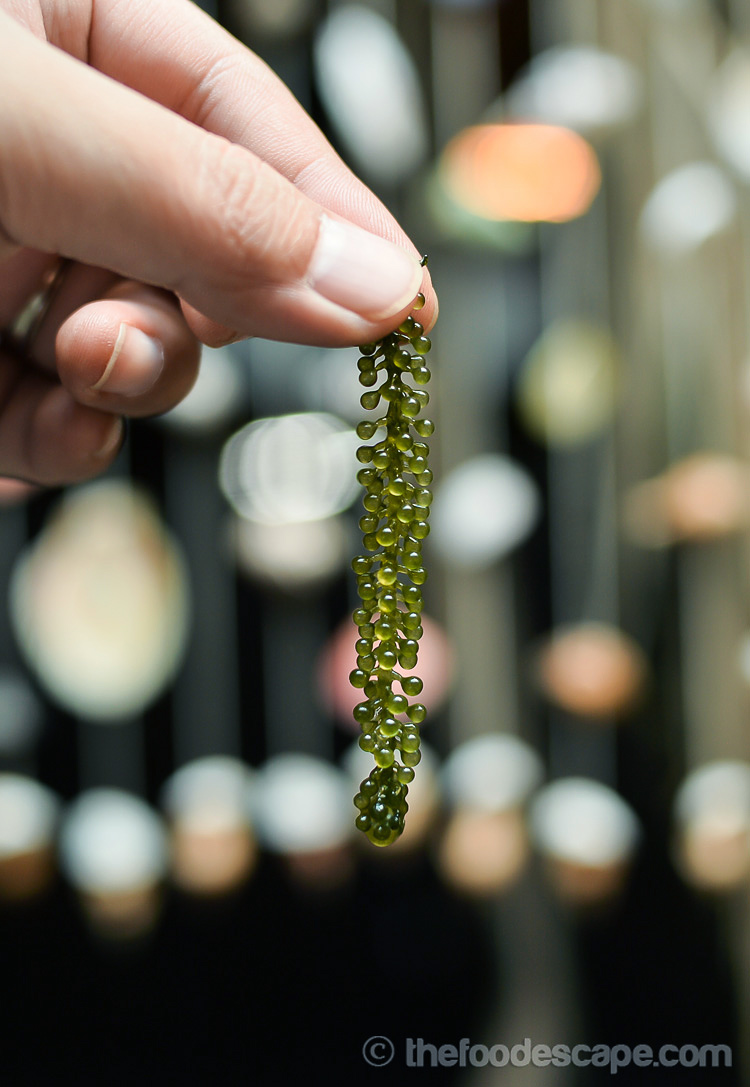 As for the other three, I recommend the Aloe Sashimi and pair it with the miso dipping sauce. Aloe is very good for health and it’s great to eat them fresh as sashimi. The vinegar-ed thin seaweed is very sour and might not be everyone’s favorite. For something simple and easy to take, go for the Horenzo.
As for the other three, I recommend the Aloe Sashimi and pair it with the miso dipping sauce. Aloe is very good for health and it’s great to eat them fresh as sashimi. The vinegar-ed thin seaweed is very sour and might not be everyone’s favorite. For something simple and easy to take, go for the Horenzo.
Sunui Tempura THB 180
Sunui is also another Okinawan type of seaweed called “mozuku”, a kind of thin brown seaweed usually served in vinegar. Tasted like typical kakiage (vegetable tempura), you can enjoy it with dipping sauce or natural salt provided.
Suzuki No Usuzukuri THB 200
Beautiful presentation of Japanese Sea Bass sashimi, this can never go wrong for raw fish lovers.
Rafute THB 250
Okinawan braised pork belly dish that can bring you to heaven right away, LOL! The pork are slow-cooked until very soft and melt in the mouth as immediately as they touch your tongue. Although the pork are bigger and thicker here in Nirai Kanai, taste-wise, we prefer the one in Tontoki Jakarta.
Kurobuta Set THB 480
Well-marinated and juicy were my first impressions of this dish. A delightful combination of sweet, savory, and sour taste really made a well-balanced dish, not mentioning the super tender pork meat. However, I still prefer Rafute thousand times better than this.
Yakitori No Mori THB 280
Awamori is never complete without skewers, right? We ordered the assorted platter, which included 5 sticks of: chicken and scallion, chicken meatloaf, mushroom, chicken gizzard, chicken wing.
Soki Soba THB 180
Pork spare ribs with Okinawan soba noodles in soup, I was actually surprised they have it here! The soup was clear yet tasty, and the spareribs were chewy in a nice way. I don’t remember eating hot soup dishes like this in the sunny island, but well, it happened to be super cold in Bangkok, so this was a great choice.
Tori Karaage THB 150
Served with Okinawan lemon sauce, the karaage must be dipped into the ponzu sauze to gain the maximum citrus flavor. The karaage itself was deep-fried into perfection where the color was perfectly golden and the crunch was amazing.
Tonpeiyaki THB 160
Okinawan okonomiyaki, we tried this before in SAKANA DELONIX, and although the appearance is about the same, the ingredients are somewhat different. Here they put quite a lot of sliced pork and mainly spring onions, while in SAKANA, there were more shredded cabbage involved. It felt like eating an omelette with bunch of spring onions and pork, nothing really special.
Jikasei Kuroto Purin THB 120
Literally translated as “Homemade Black Sugar Pudding” is a recommended dessert to try here. Okinawa is known as producer of black sugar and the people use this often for their food or drinks. With aromatic caramel-alike flavor, this pudding is definitely not to miss!
Sata Andagi (Okinawan Donuts)
Make sure to keep a space for this Okinawan Donuts that are served with ice cream of your choice. The deep-fried donuts have rough yet fragile surface with slightly hard texture, but very enjoyable eaten with one (or two) slap of ice cream.
I knew this would be a very long post, but I just couldn’t resist putting all the photos because this place really makes me feel so nostalgic. As the Okinawan blood flows in my body, sometimes I miss the island and visiting this restaurant somehow reminds me of the beautiful memories in the past. If this post is somehow fulfilled with excitements and overjoyed feelings, please bear with it. XD
Okinawan cuisine is probably very different from typical Japanese dishes because of its bold and strong flavors, combined with exotic plants and fruits as ingredients. Those are the things that make Okinawan cuisine very unique, healthy, and amazing, at least for me. In Jakarta, there are currently 2 restaurants specializing in Okinawan dishes: Tontoki in Mid Plaza 1 Building and EN Japanese Dining in Senayan City. While I go VERY often to Tontoki, I have never really tried Okinawan dishes at EN. I must say that for now, Tontoki has been doing a splendid job satisfying my cravings for Okinawan dishes, and I hope that something like Nirai Kanai can open in Jakarta as well.
It has been a wonderful experience dining at Nirai Kanai, and we certainly think it’s very worth visiting if you happen to be in Bangkok (there are also outlets in Tokyo, Singapore, etc). Thanks for reading!
==
Currency Rate: THB 1 = +/- IDR 400 = +/- USD 0.028
All prices are subject to 7% VAT & 10% service charge
*The Food Escape team are not paid whatsoever for writing this post.
** This review is written based on our visit on 16 December 2015 & 20 January 2016.
Follow Us in:
EMAIL | TWITTER | INSTAGRAM | GOOGLE+
NIRAI KANAI ニライカナイ
Thong Lor 11
Bangkok
THAILAND
Ph. +66 2 381 2882
Nearest Stations:
Approx. 20 minutes walking distance from BTS Thong Lor
Opening Hours:
Sun – Thu 5PM – 12AM
Fri – Sat 5PM – 2AM

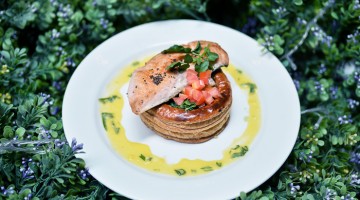


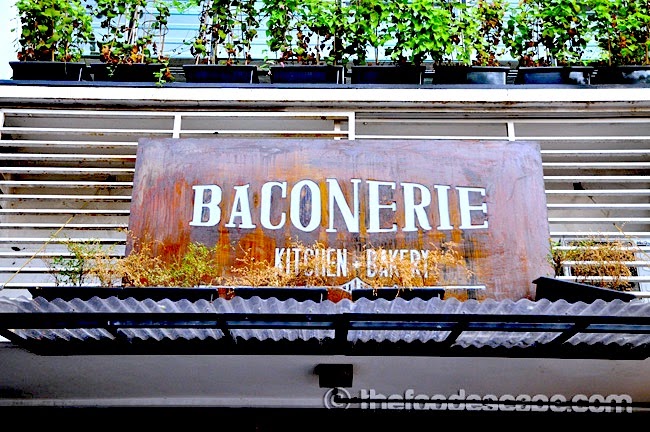
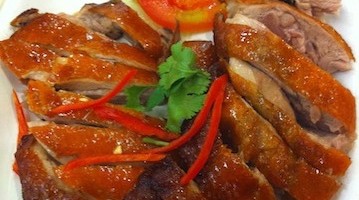



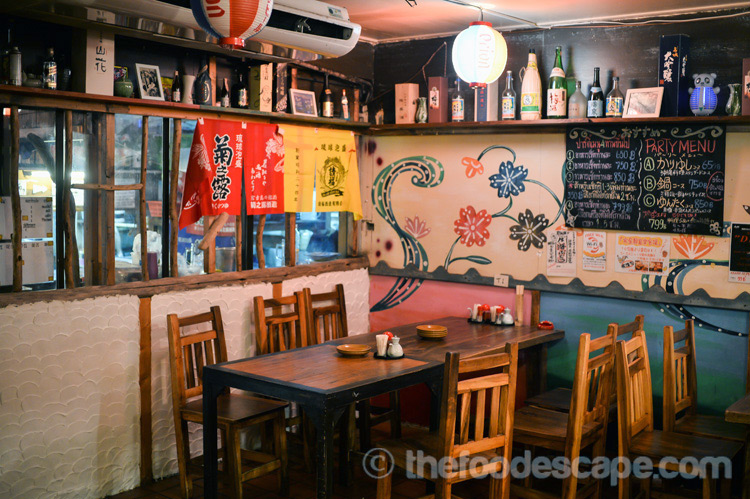
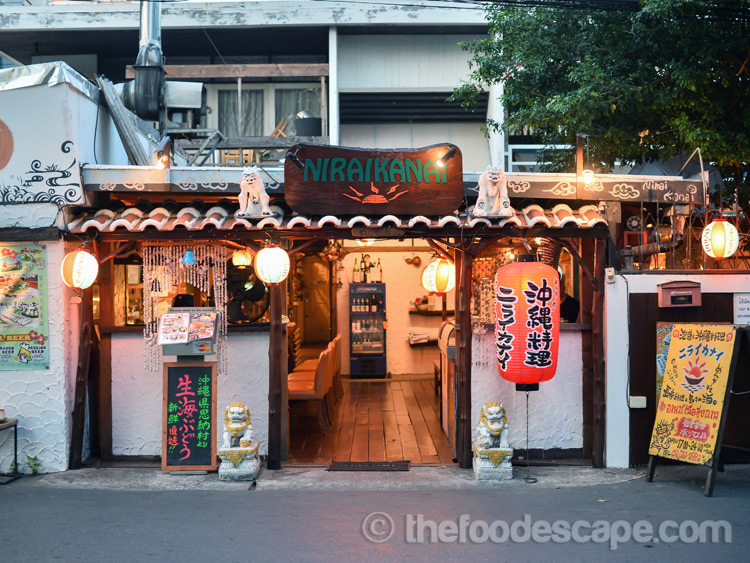
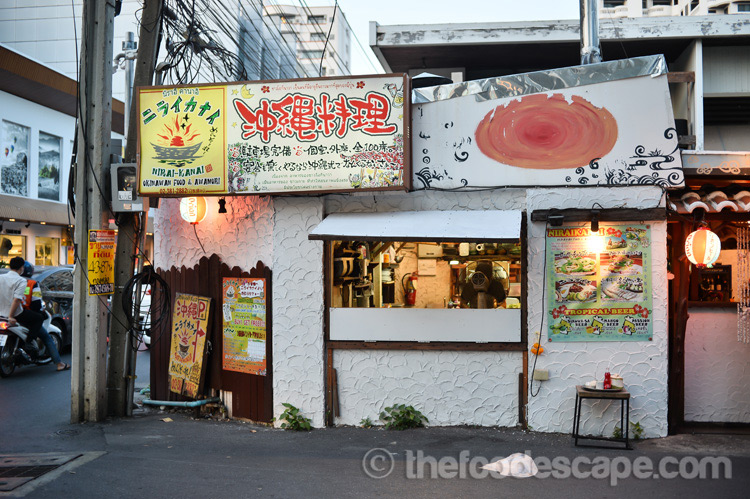
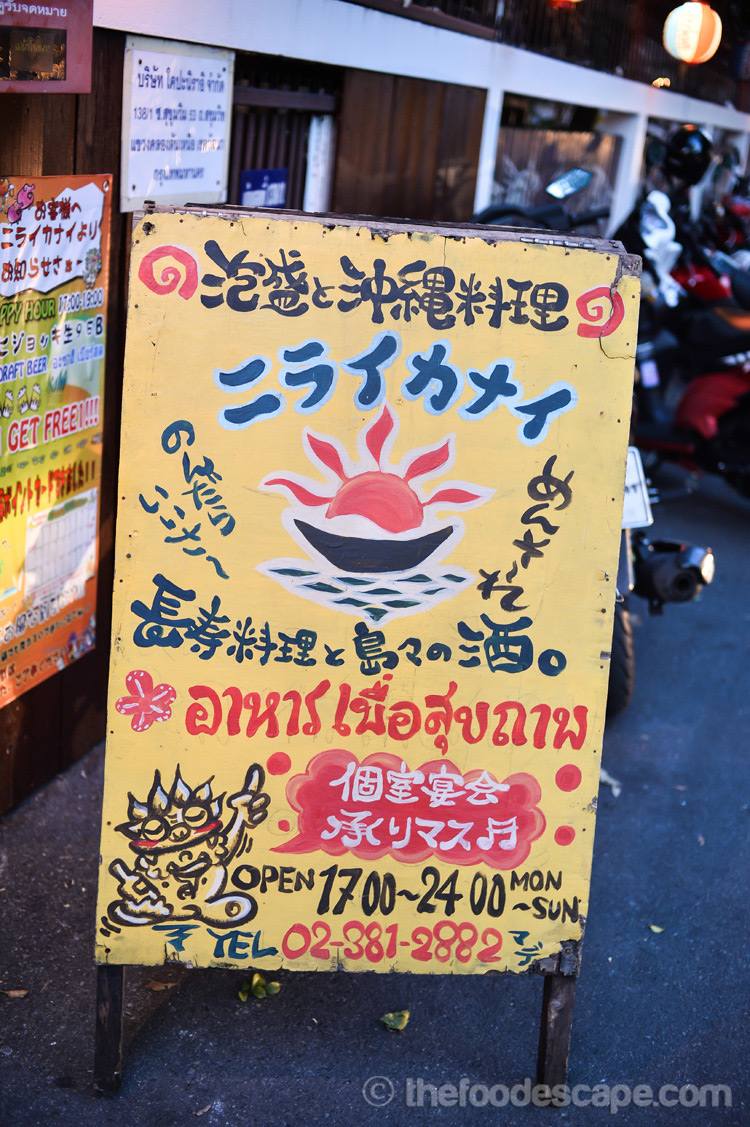
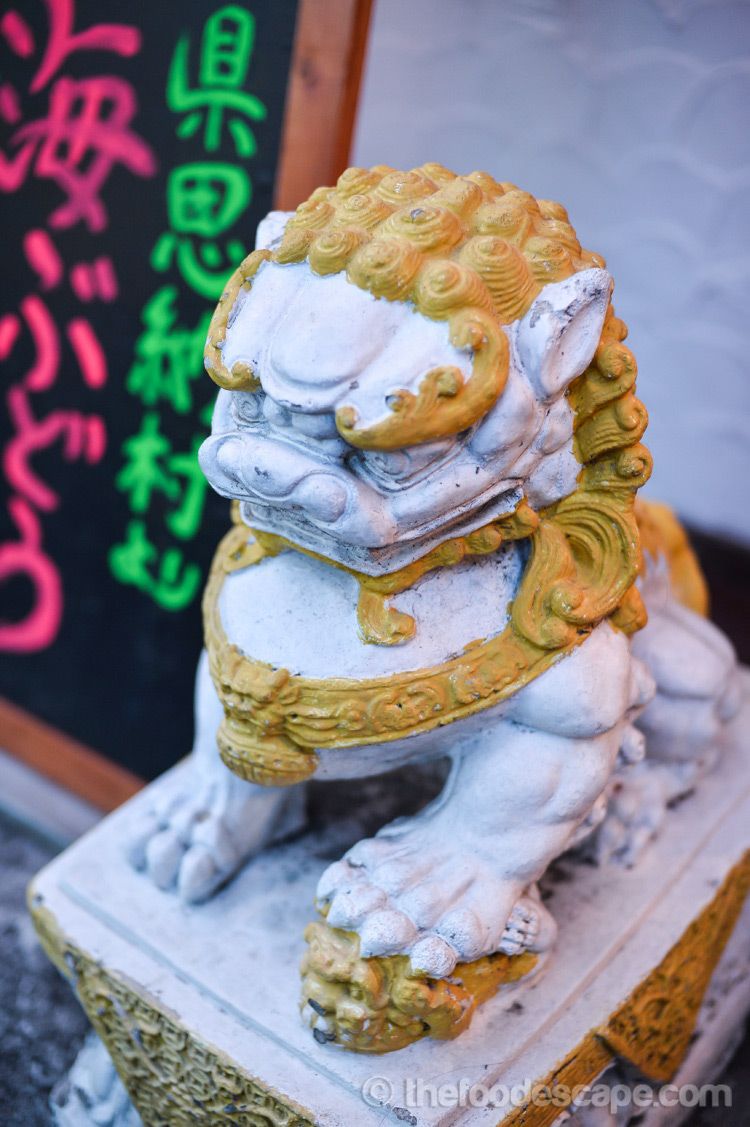
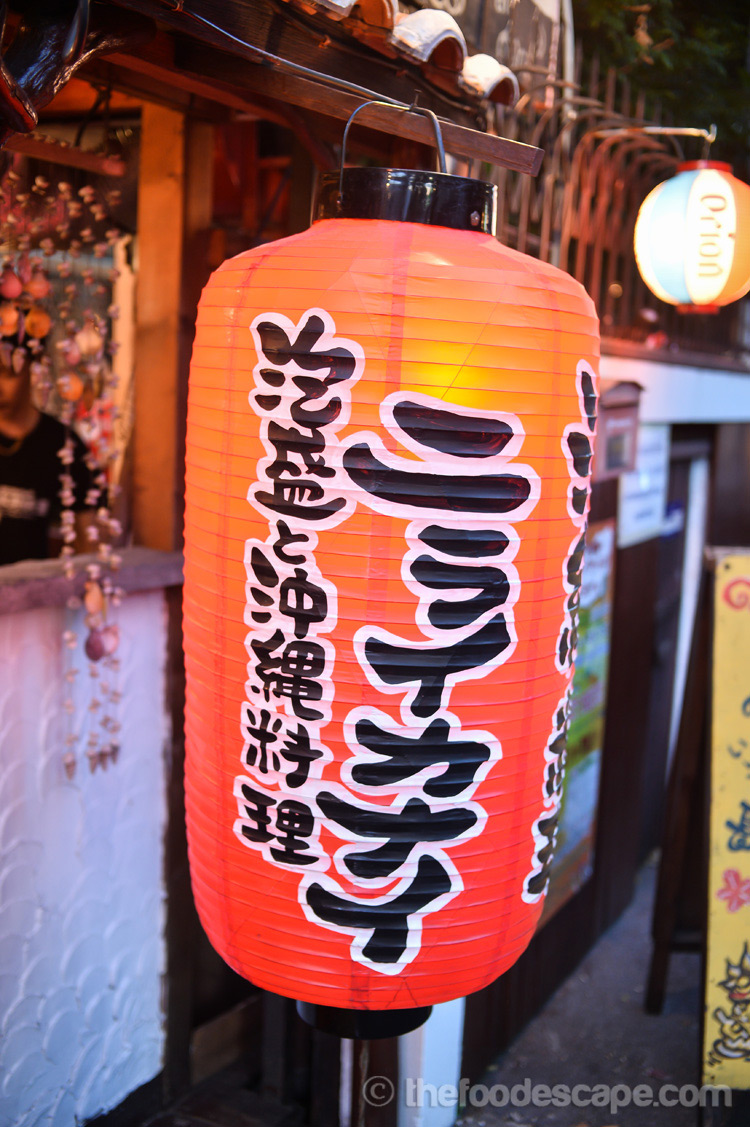
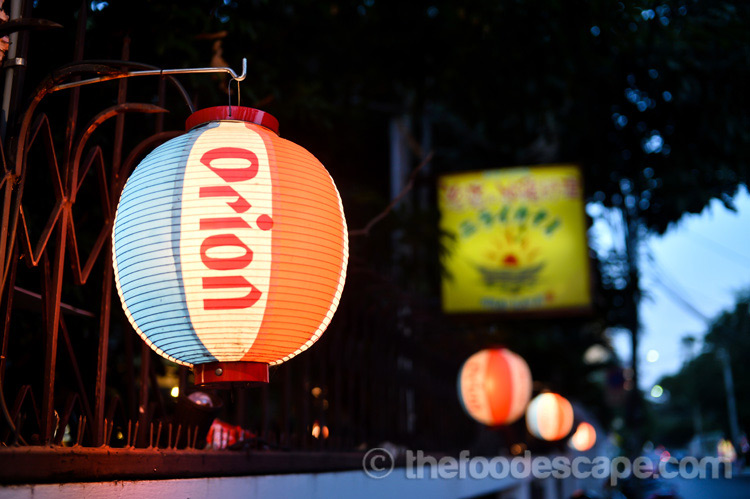
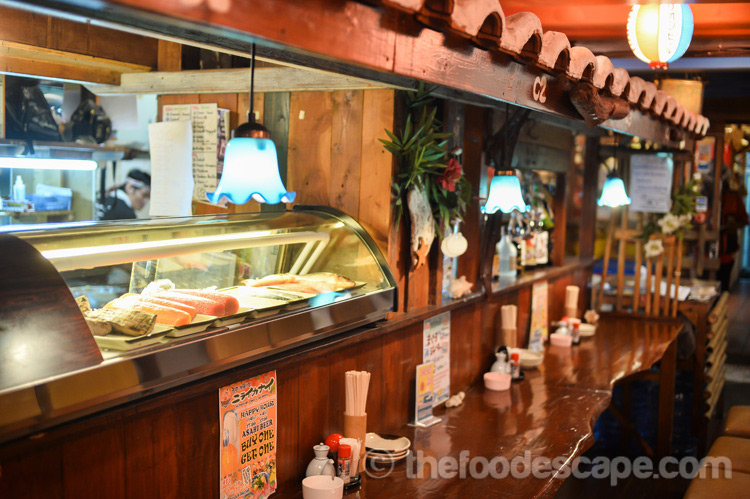
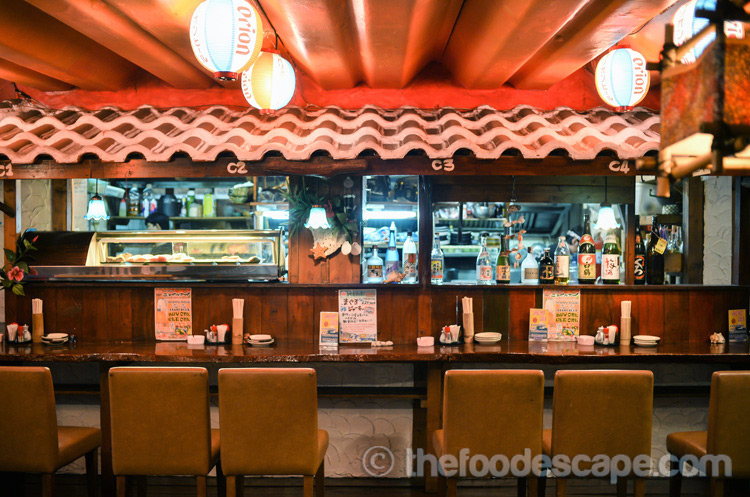
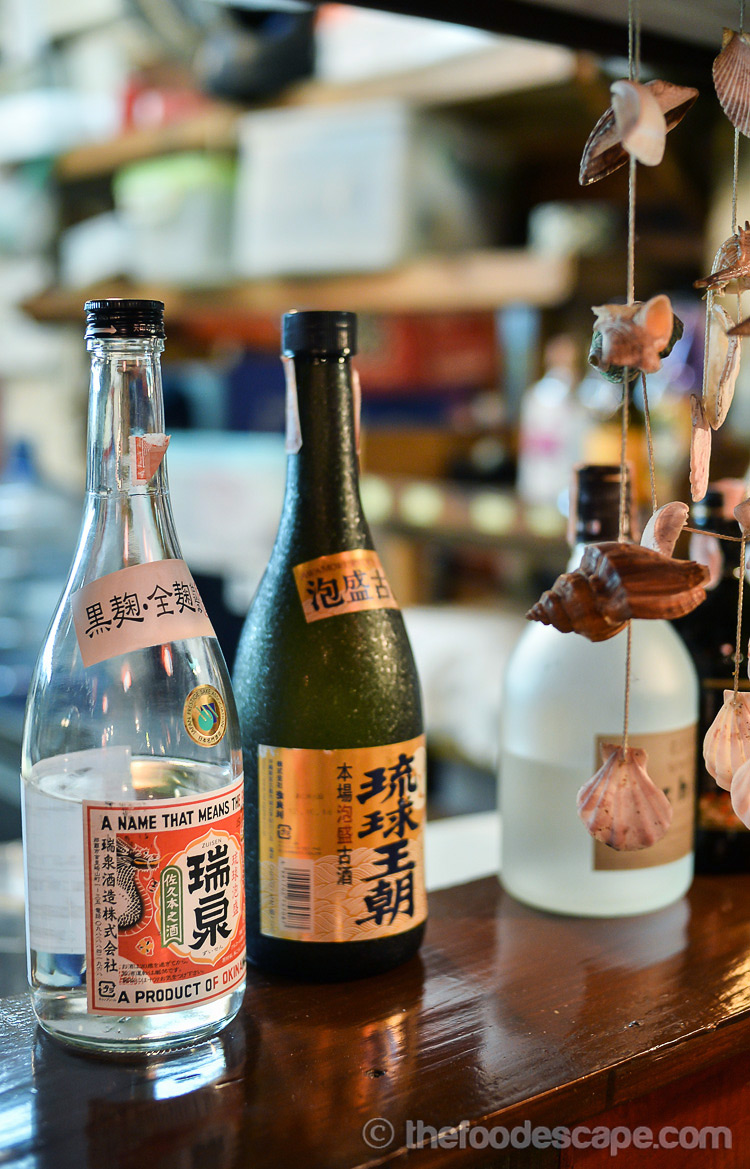
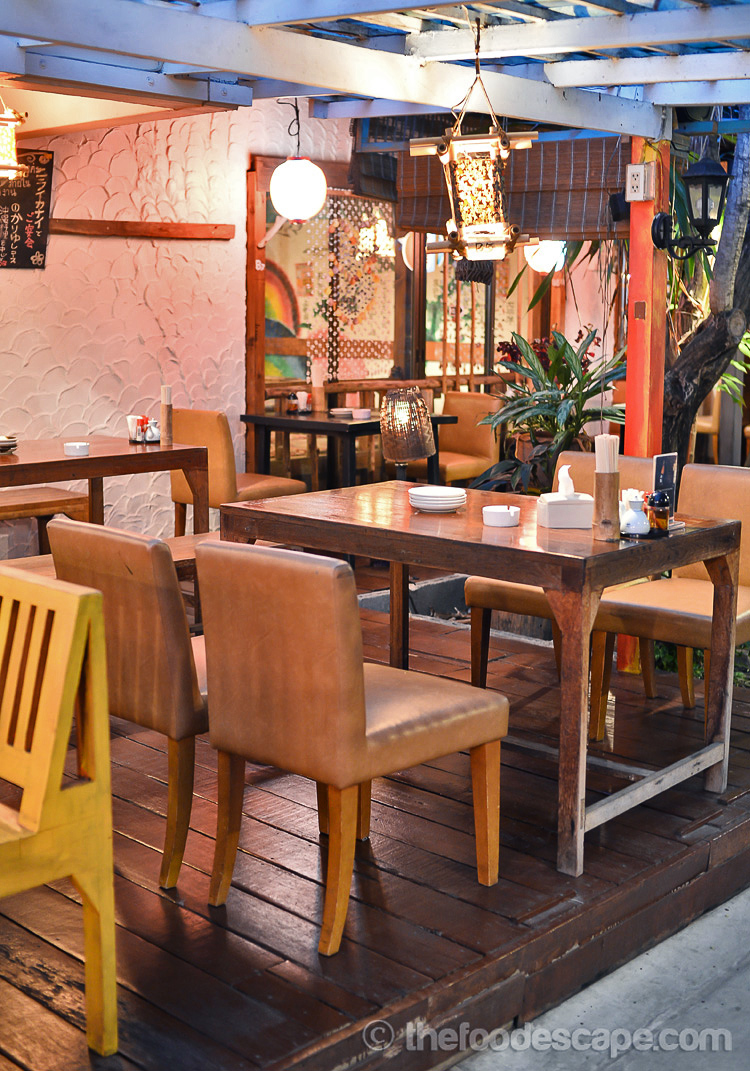
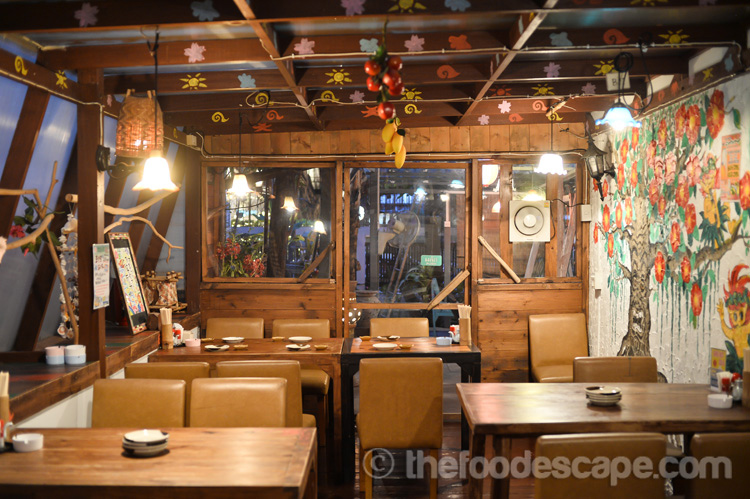
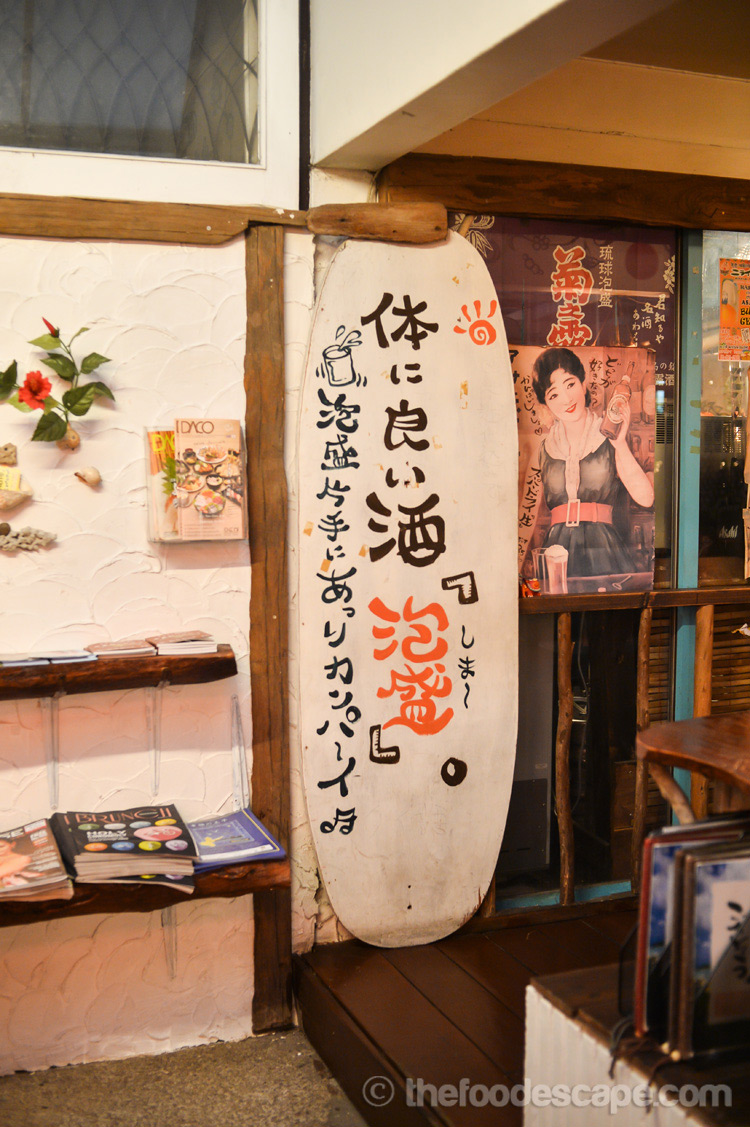
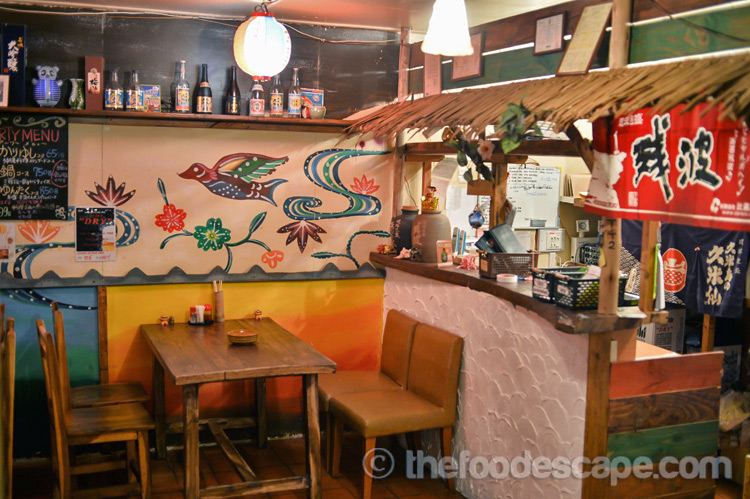
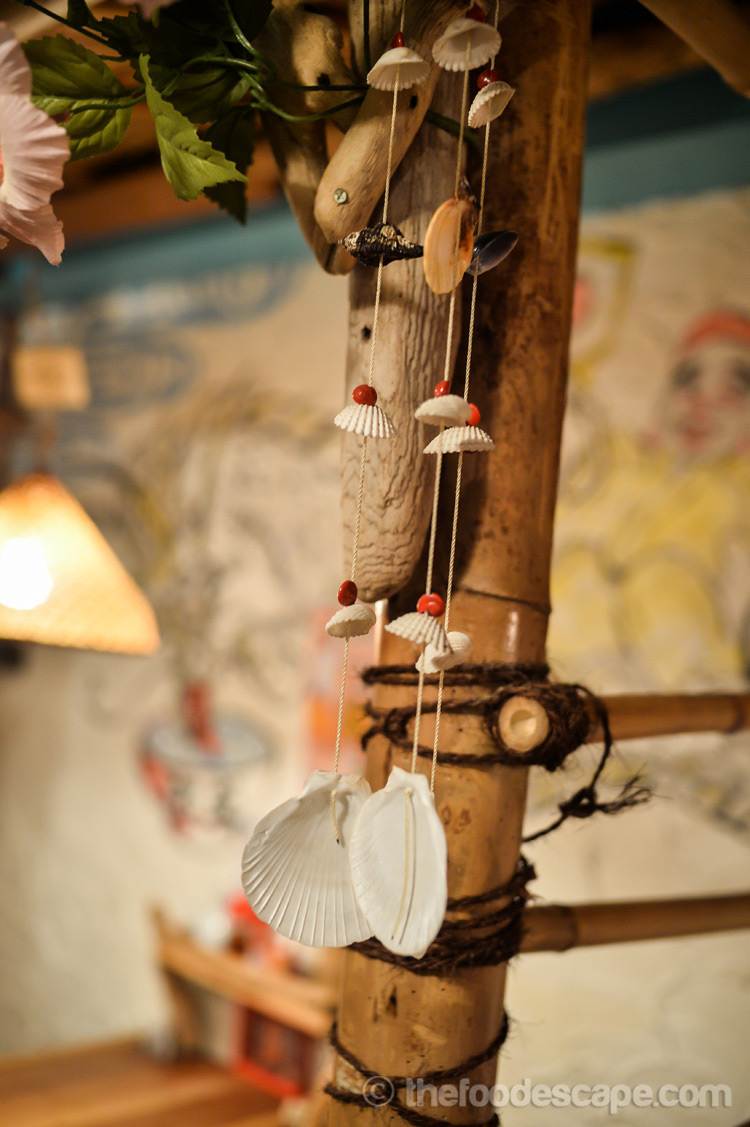
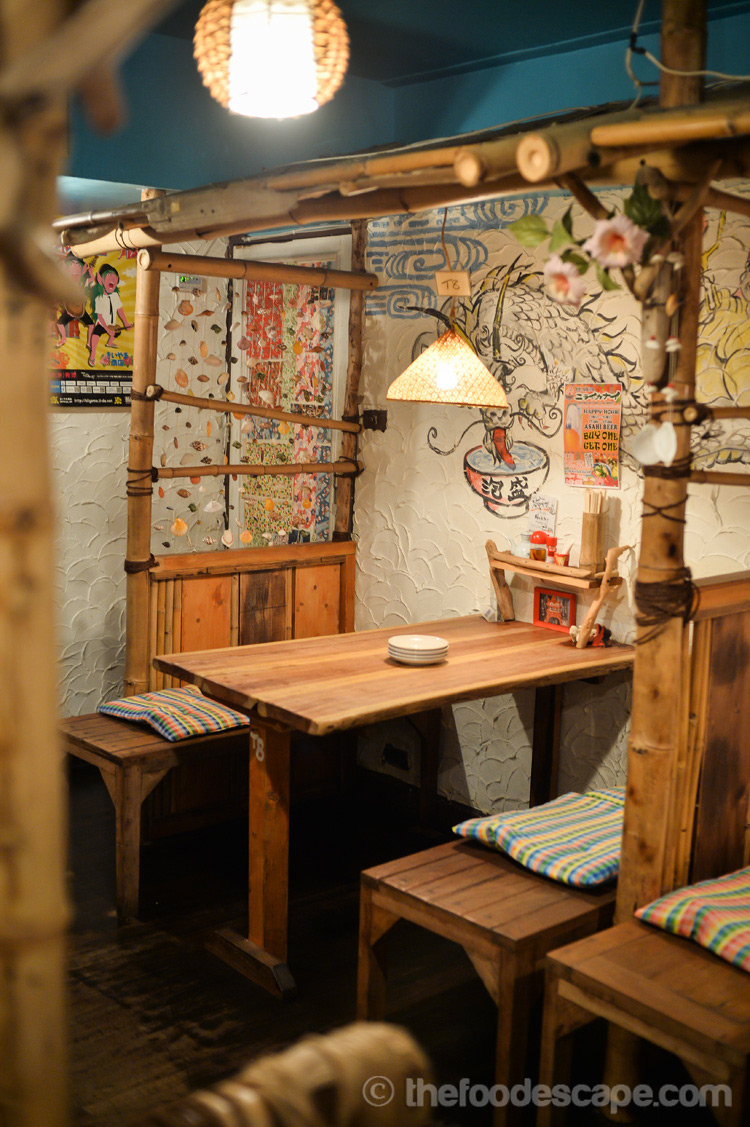
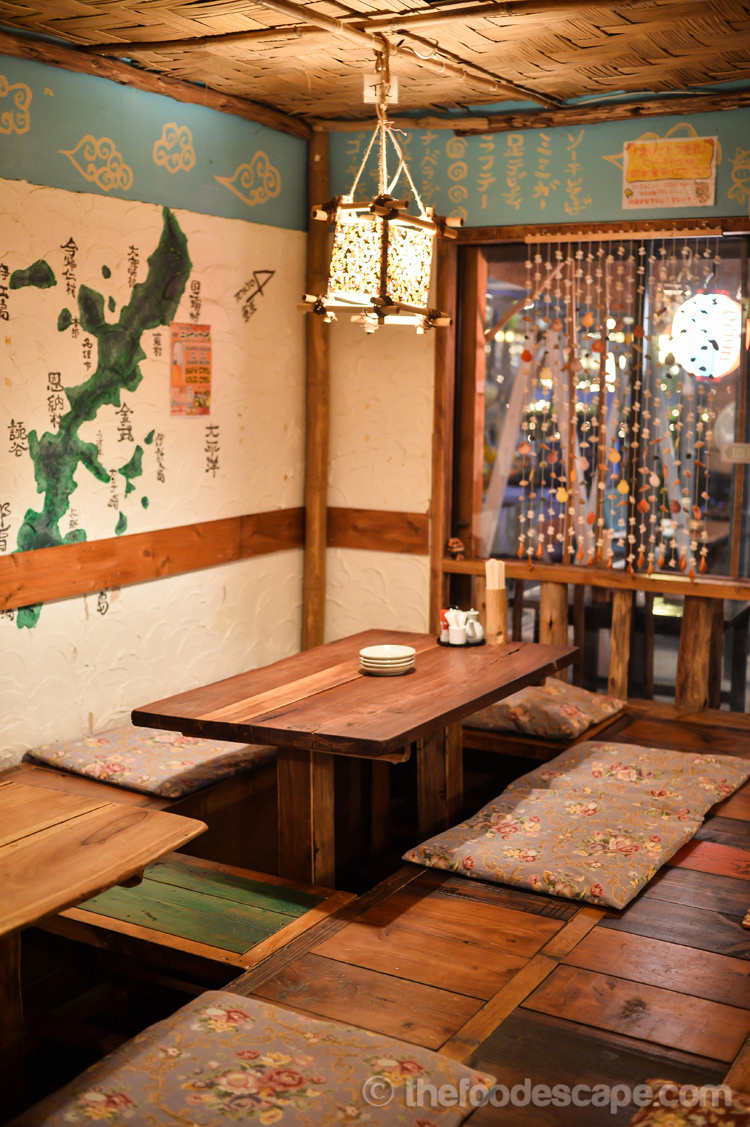
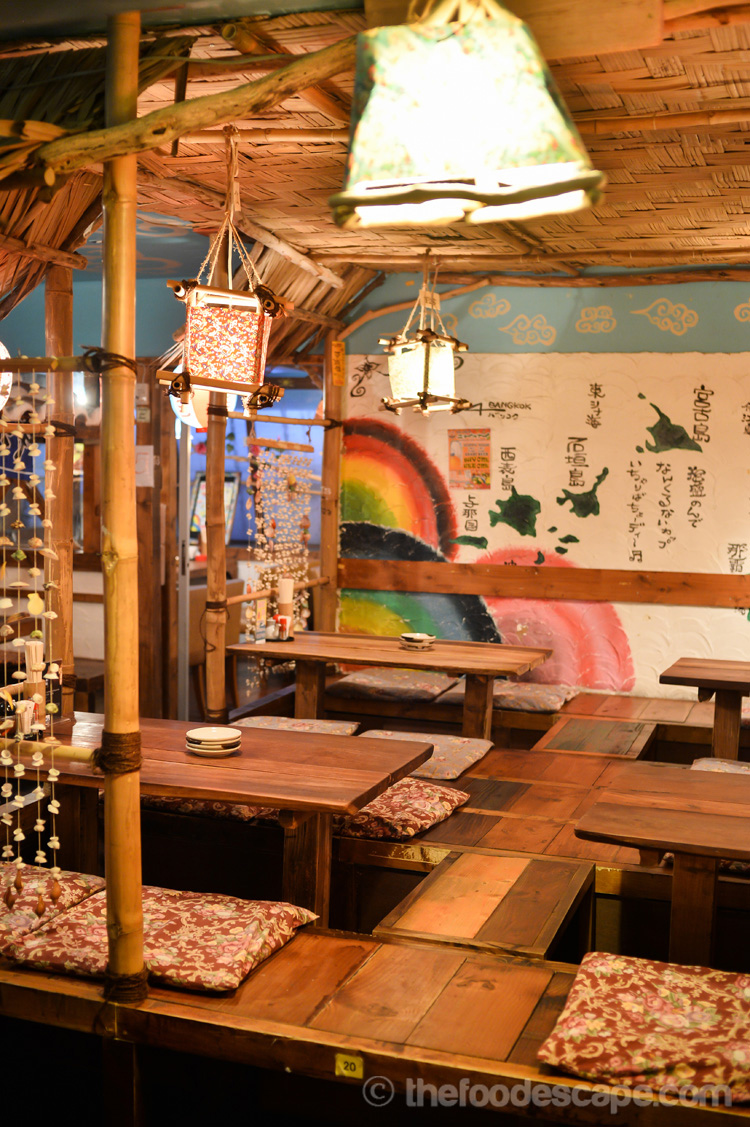
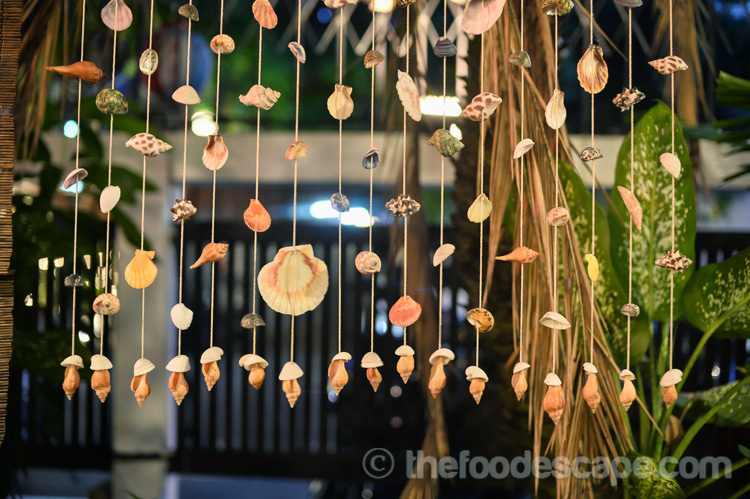
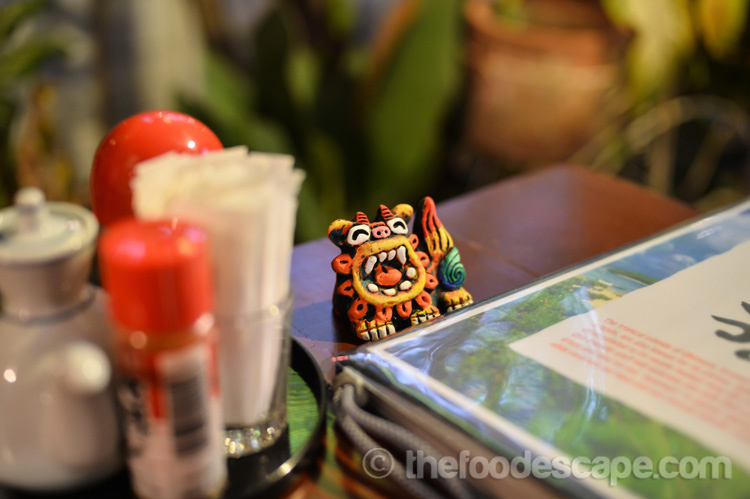

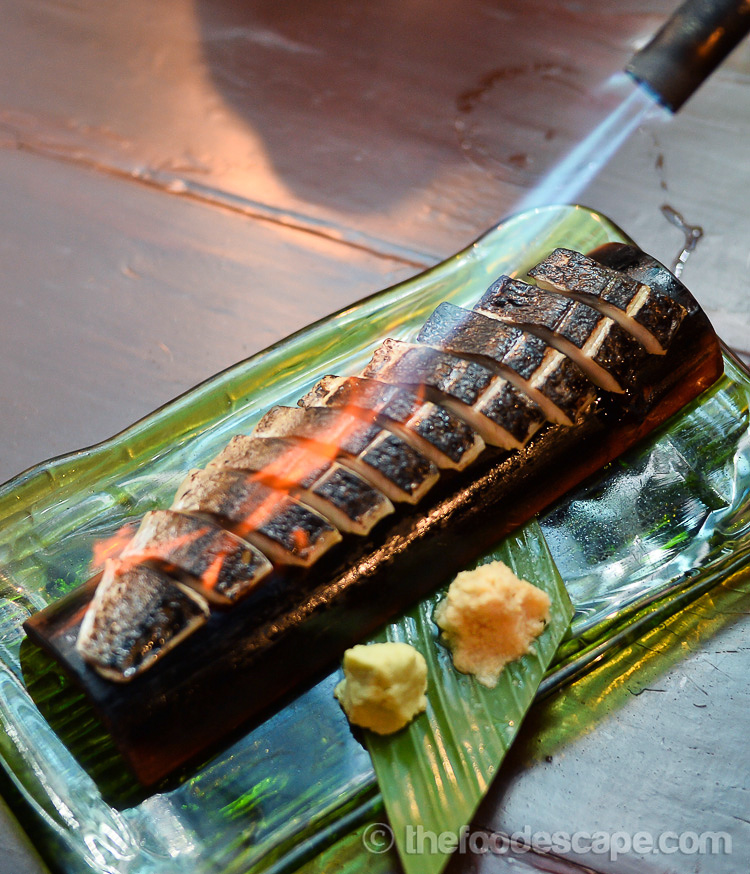
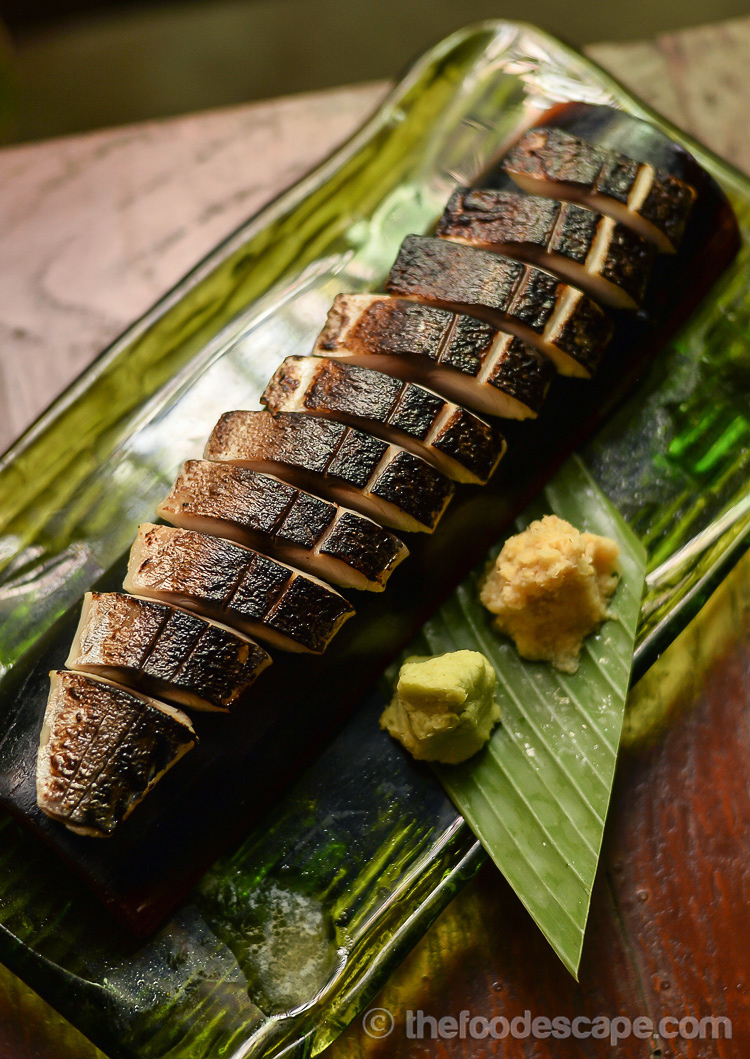
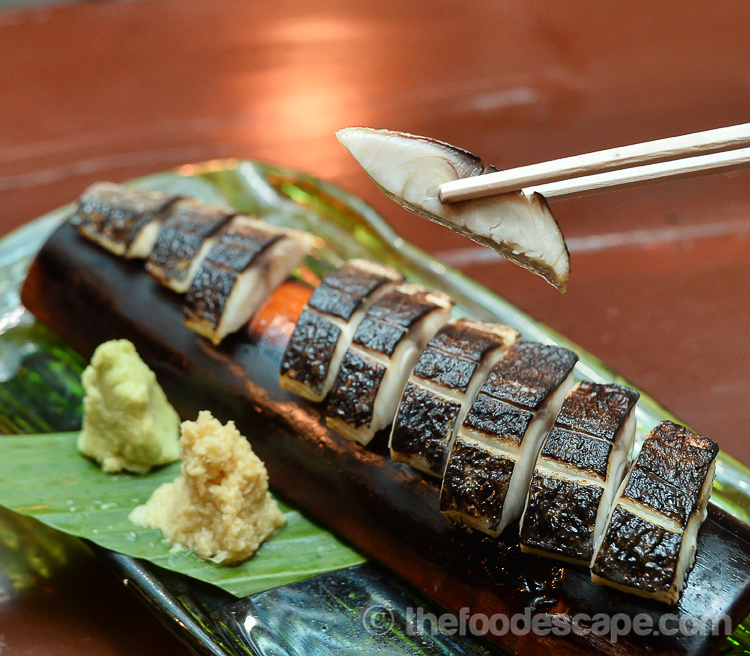
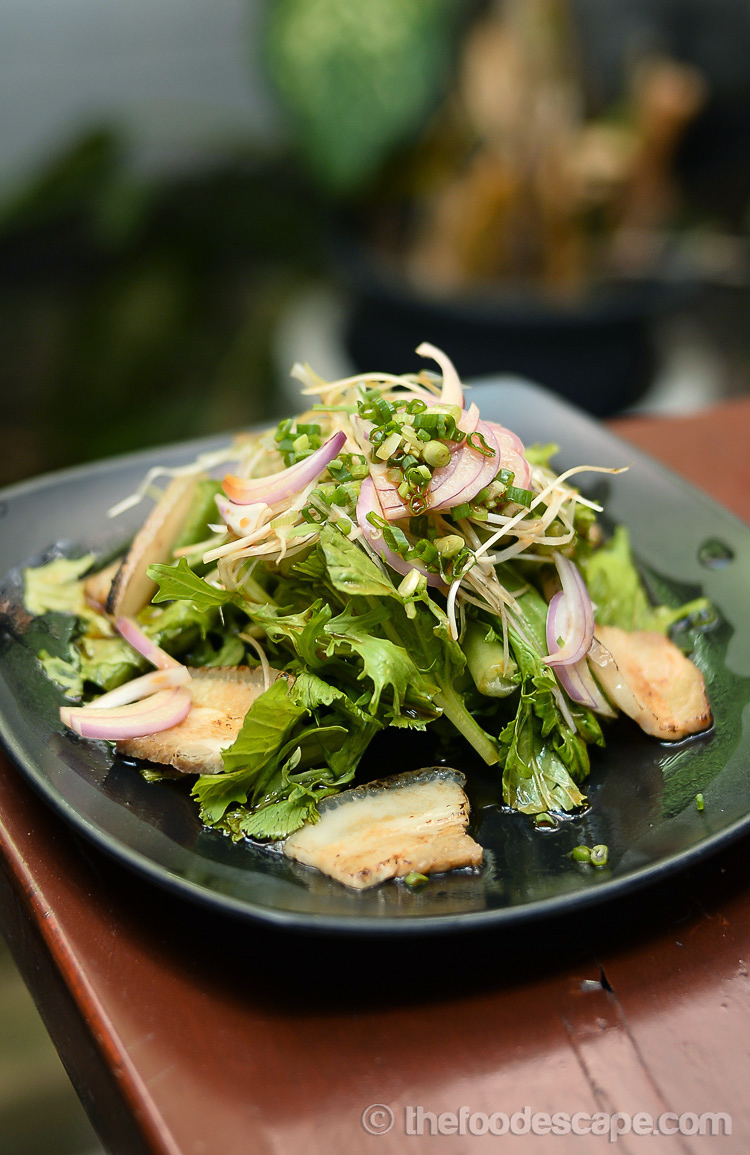
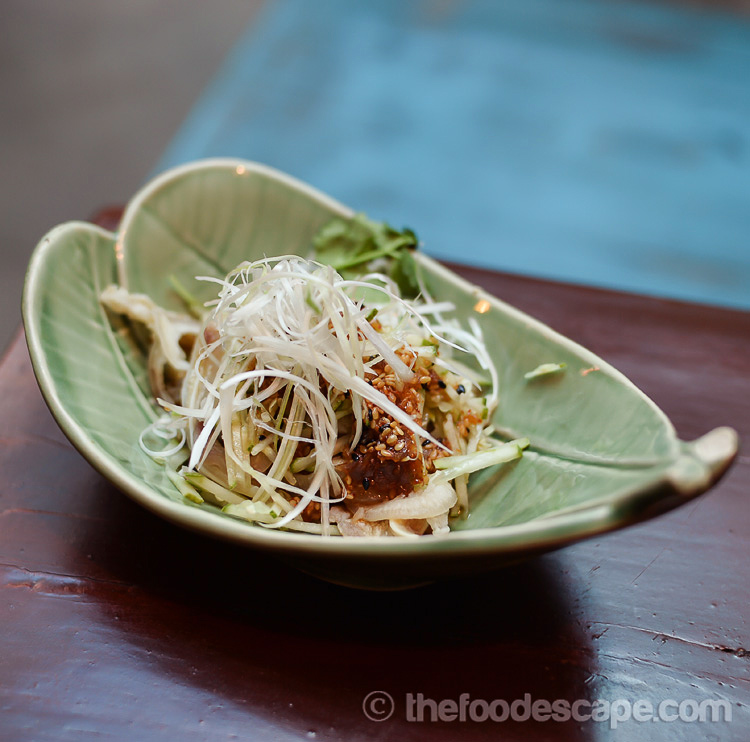
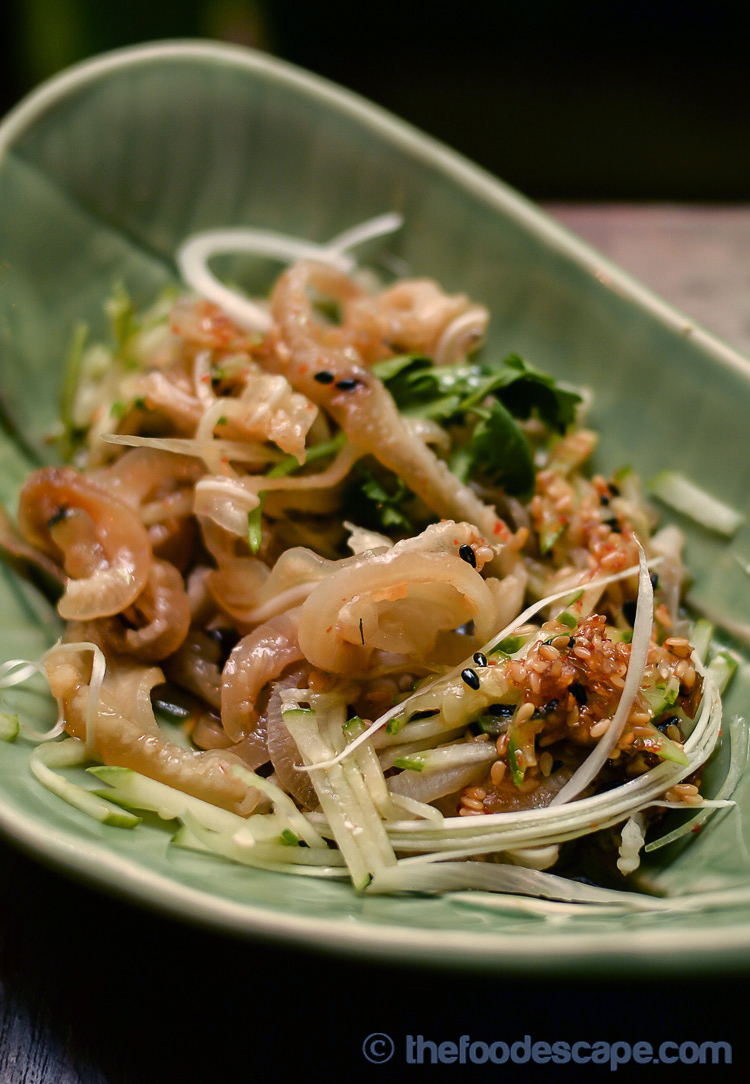
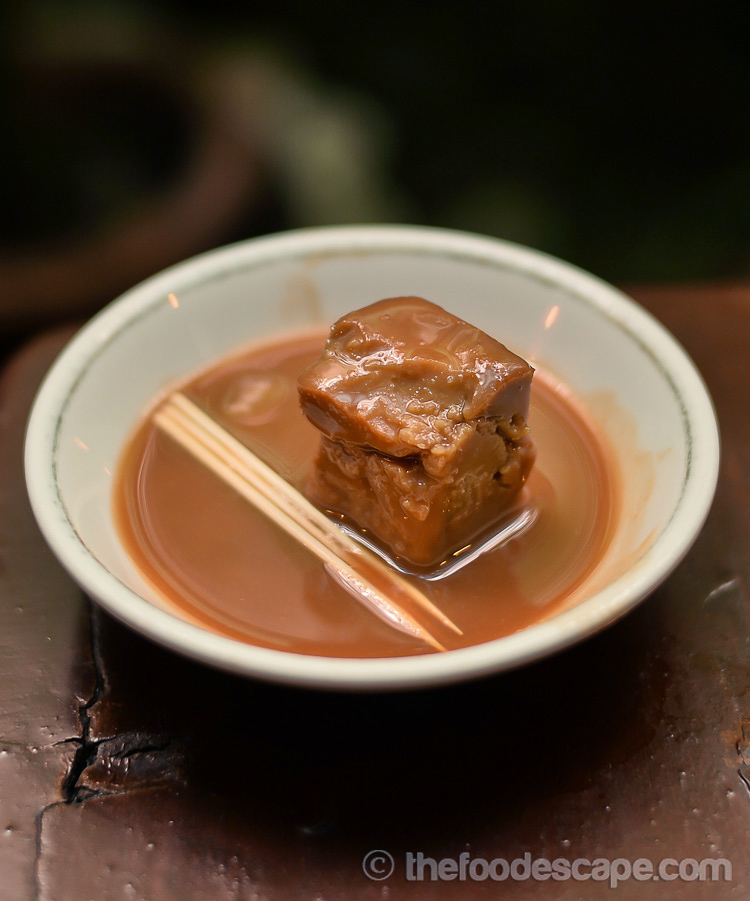
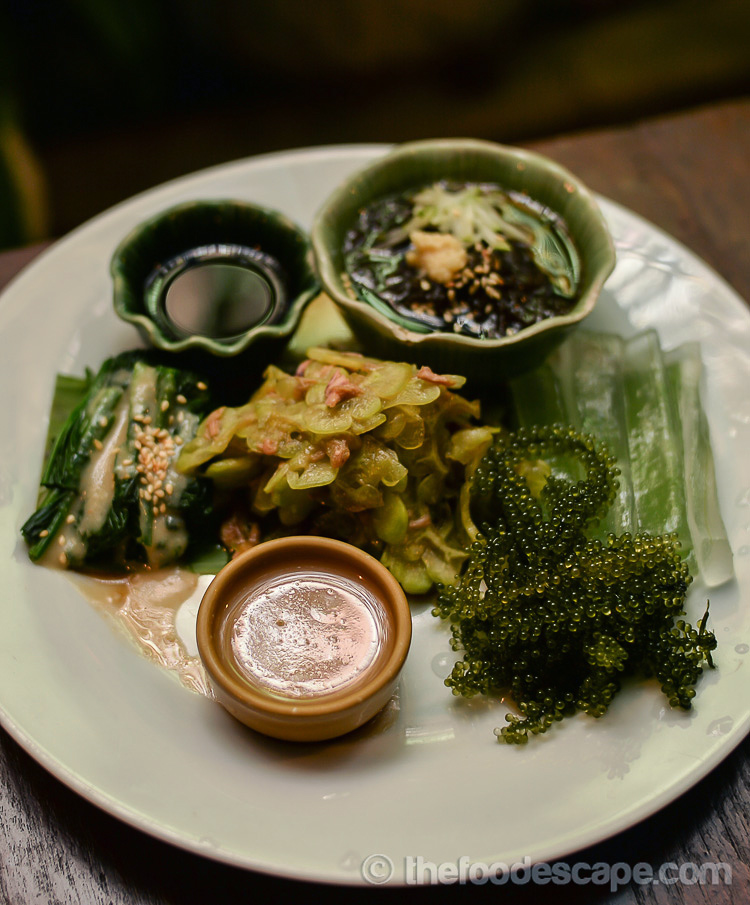
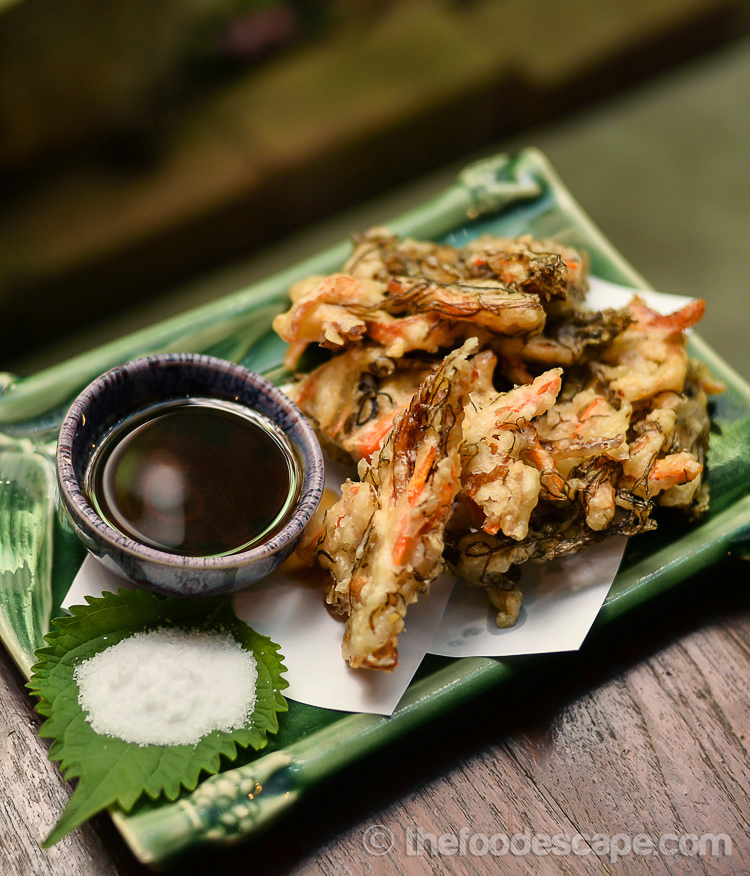
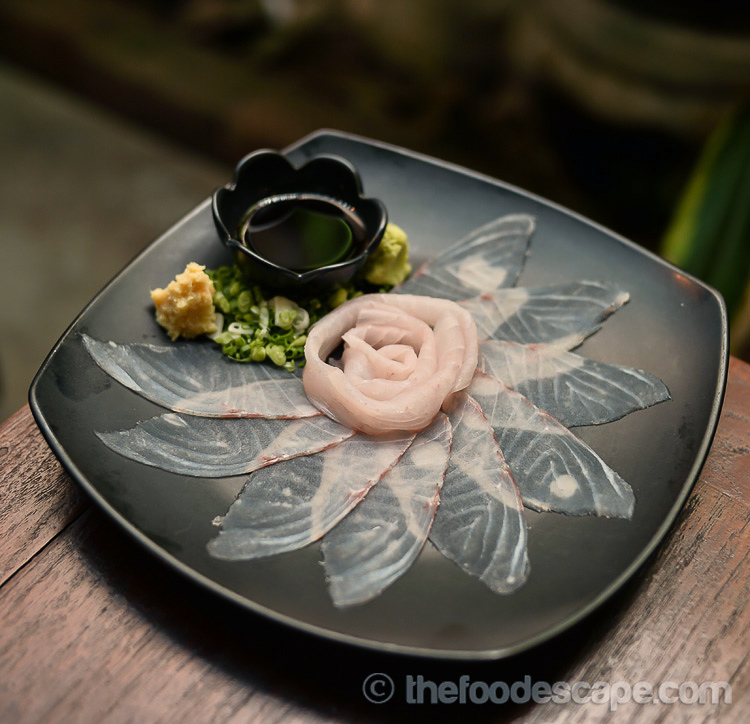
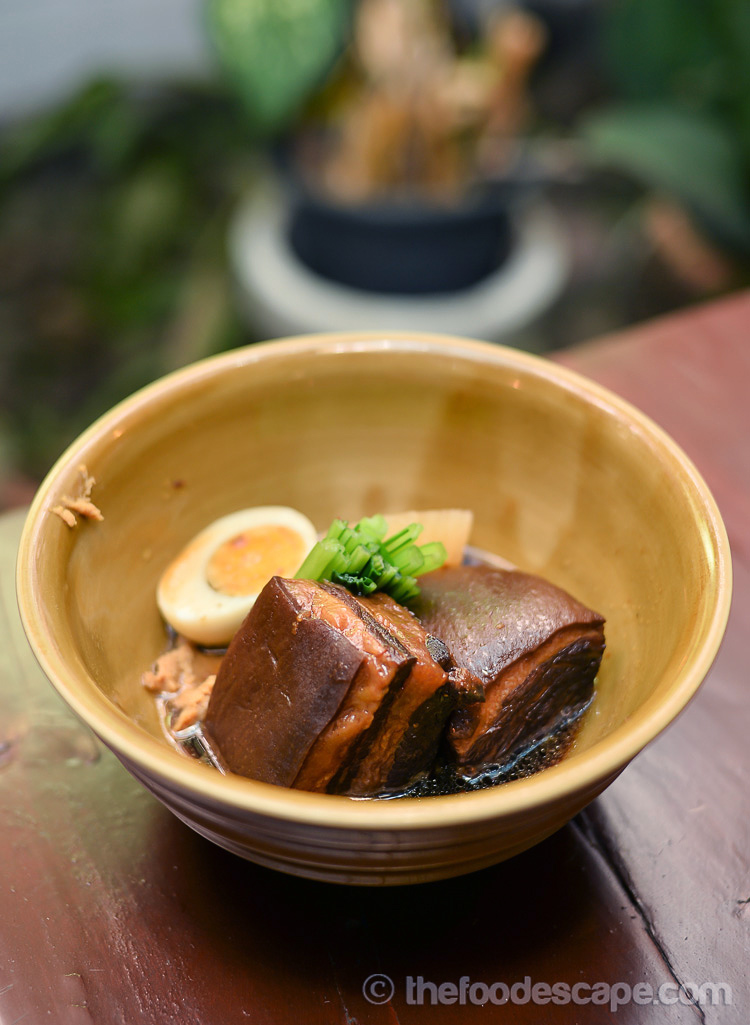

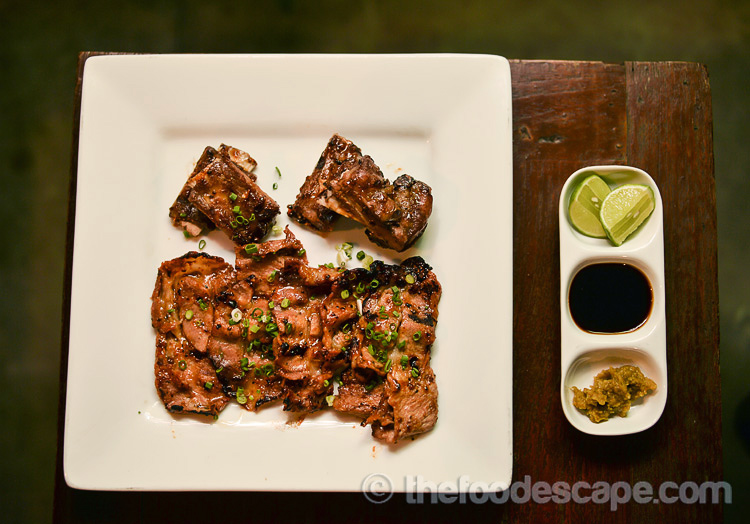
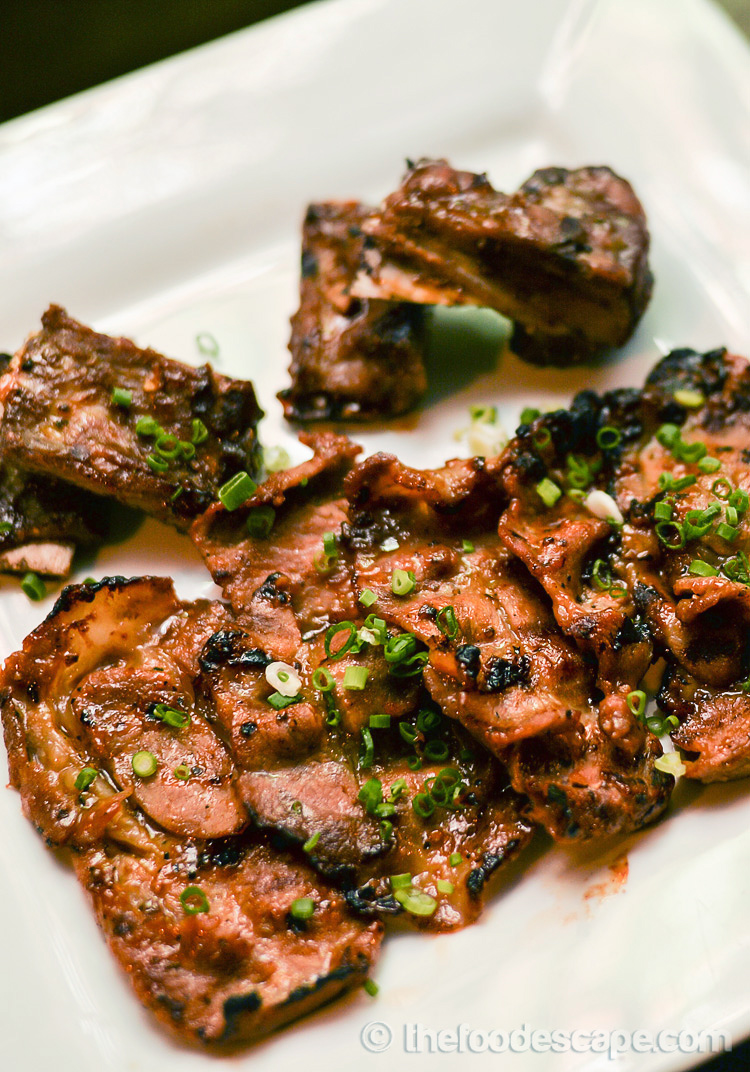
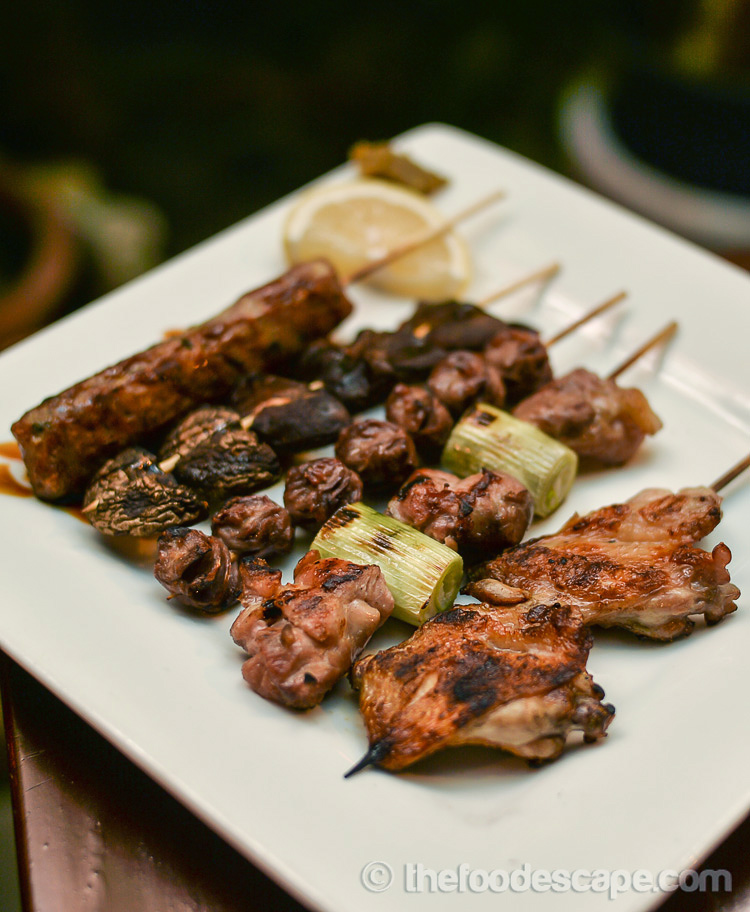
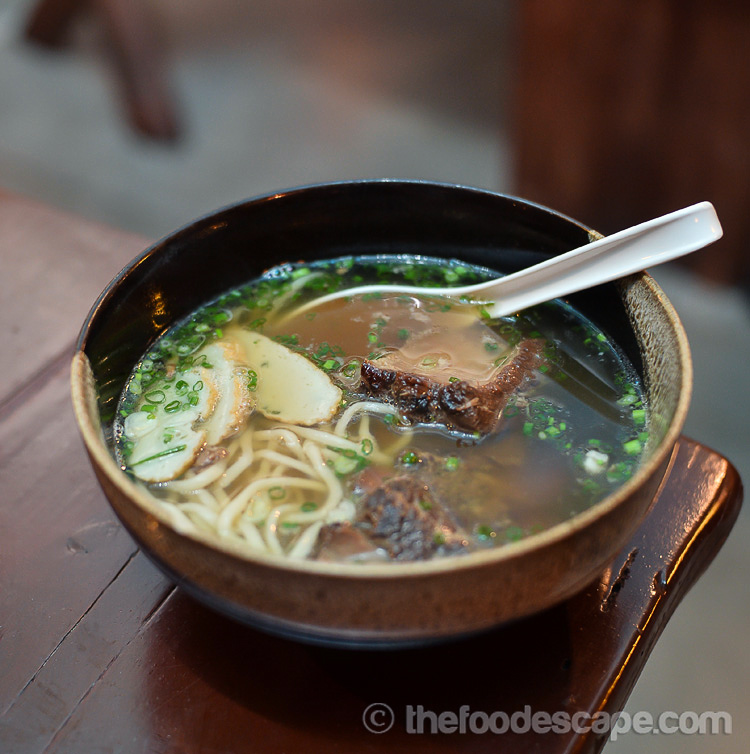
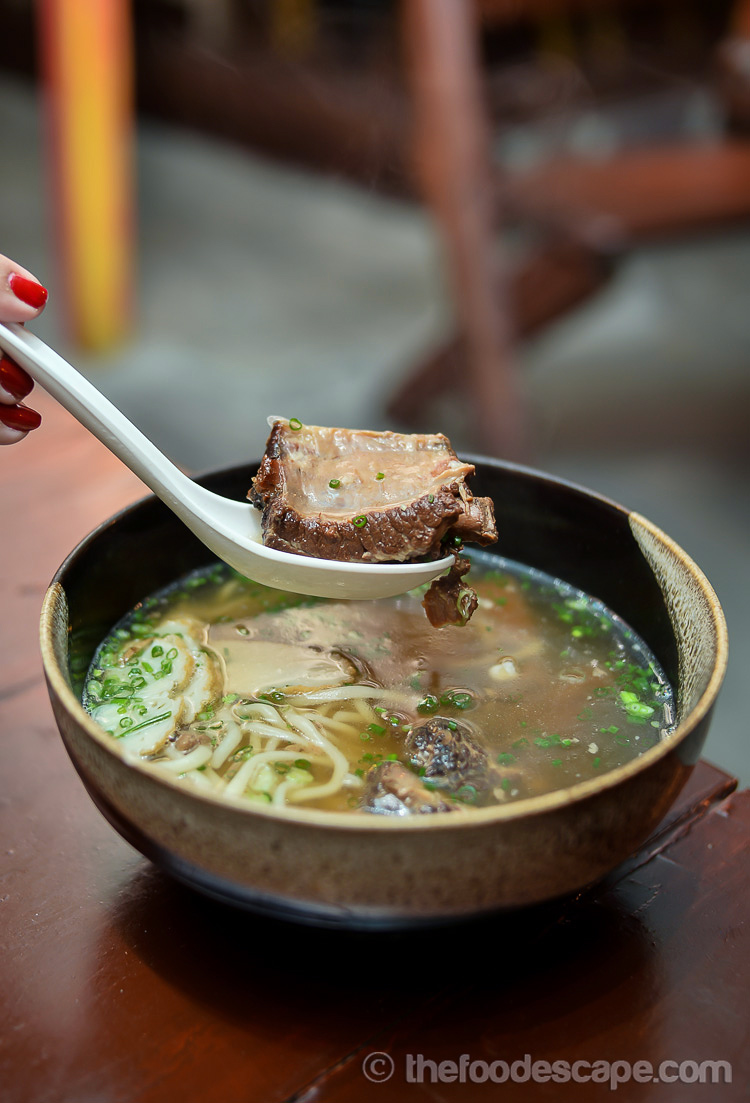
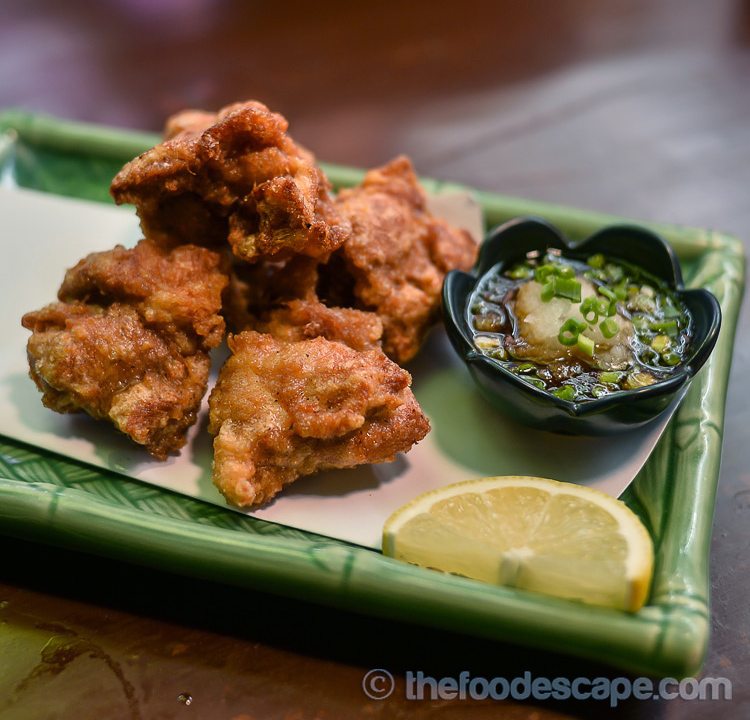
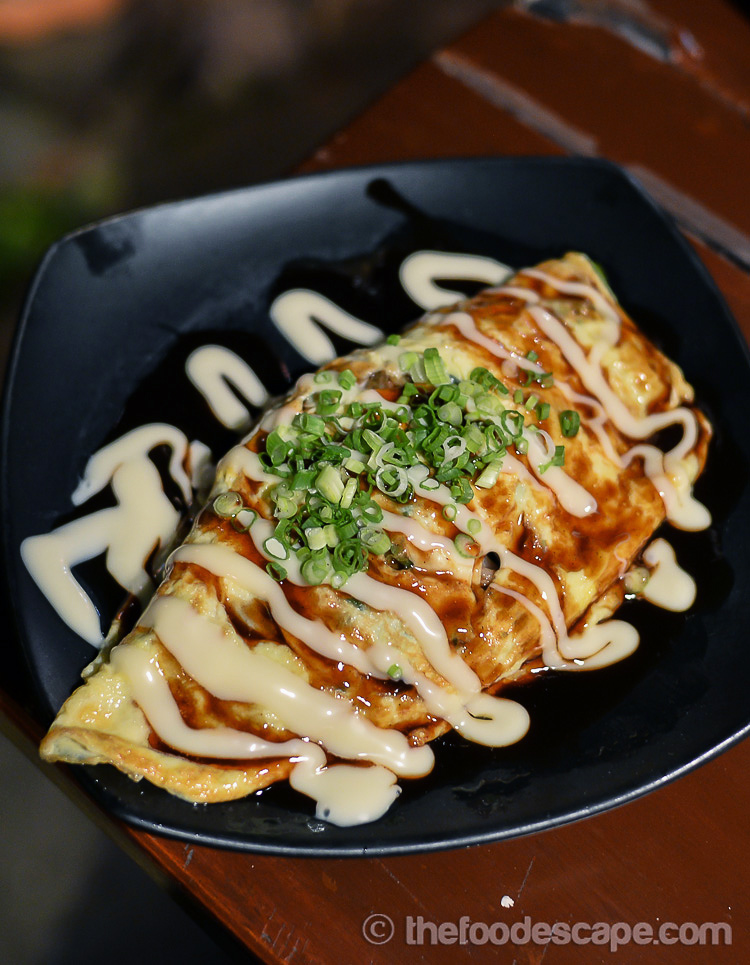
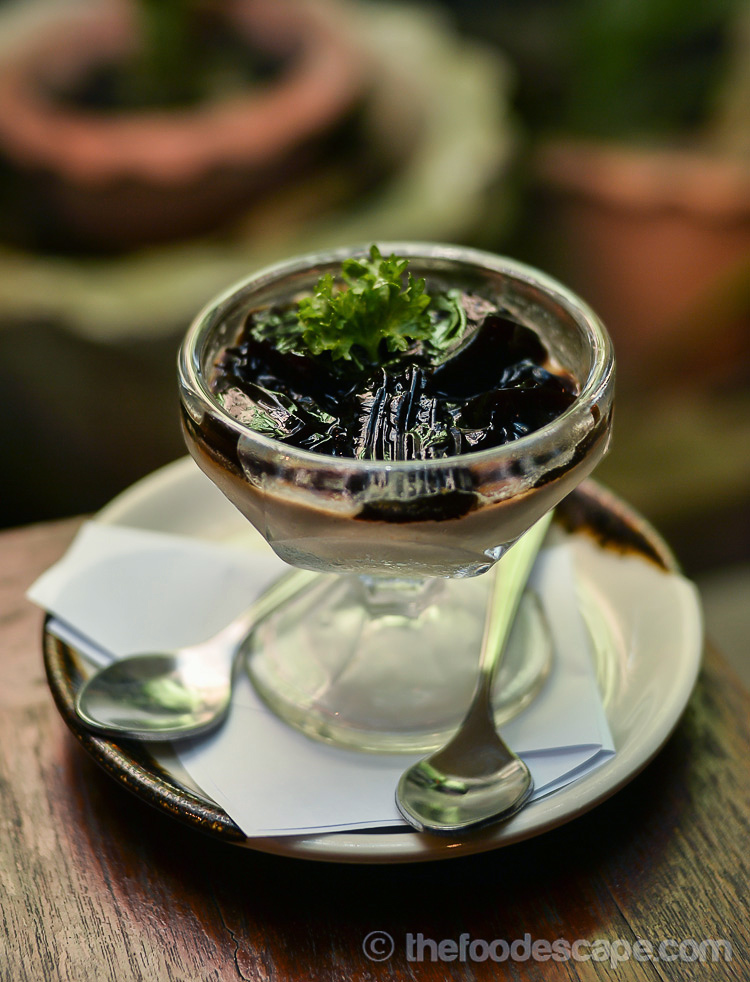
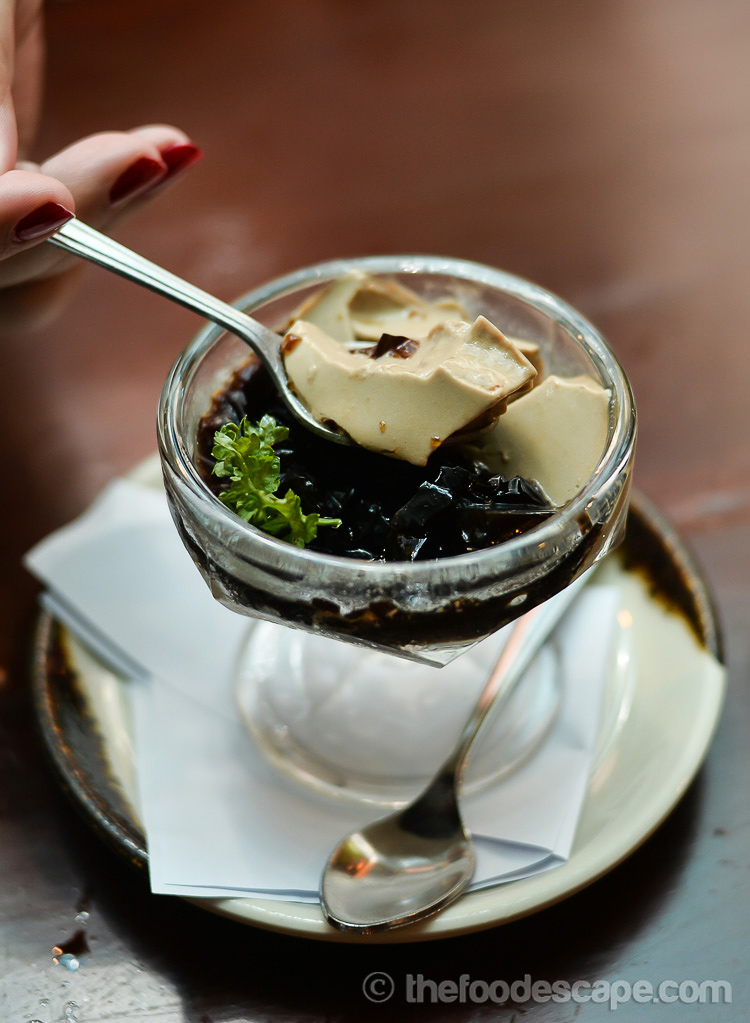
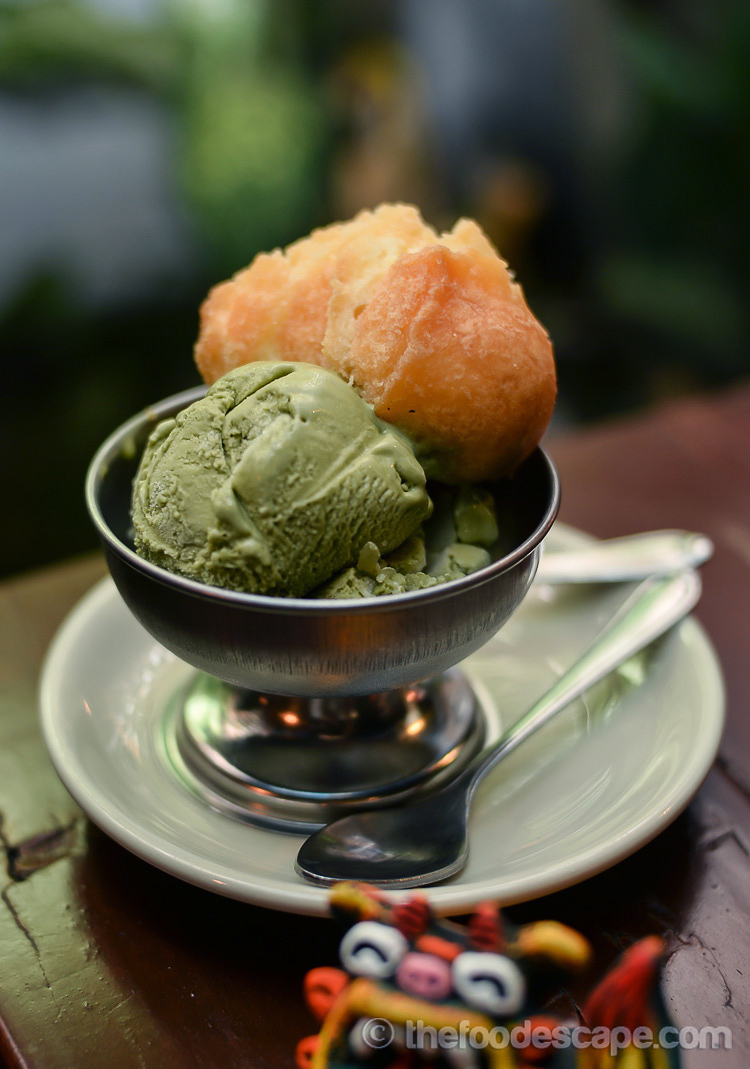
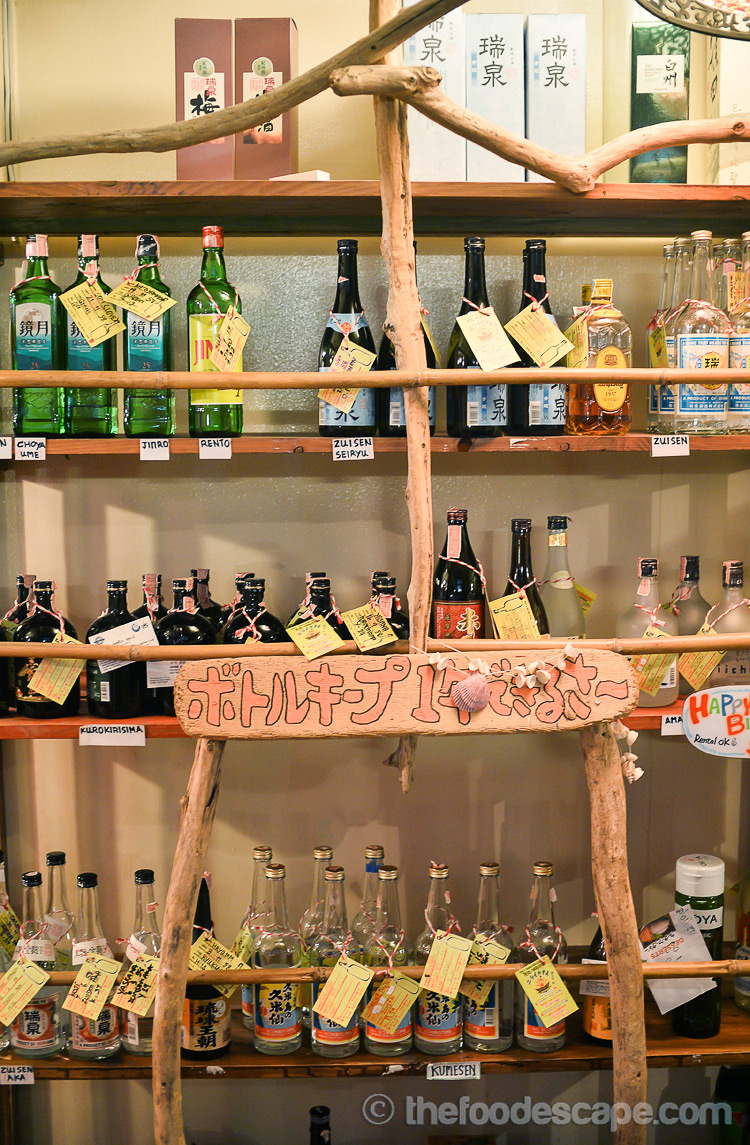

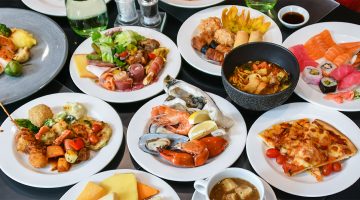

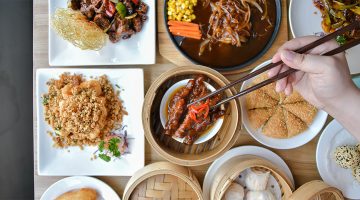
No Comment